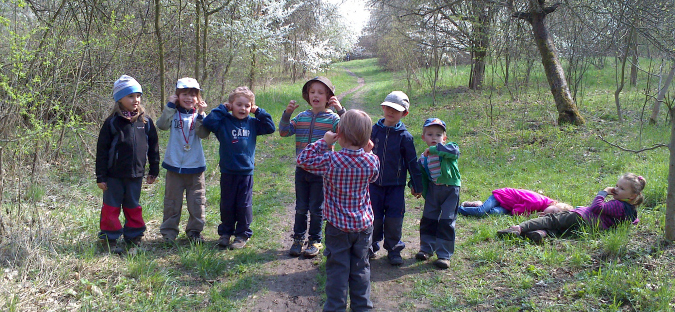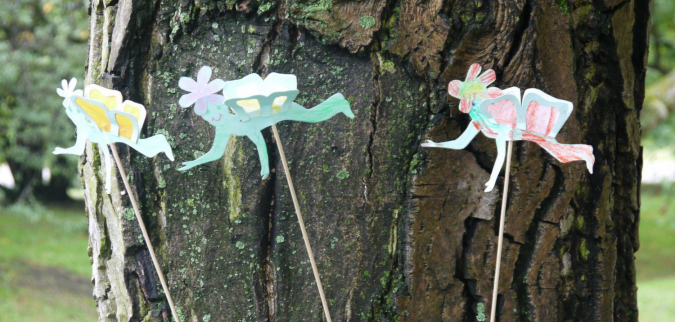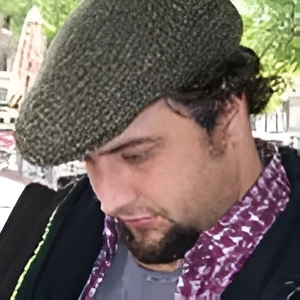Where to send our children to kindergarten is a question we expat parents fret about if not from day one then shortly thereafter. With state kindergartens (mateřské školy) filled to the brim and private schools pricier than ever, it’s a comfort to know that alternatives exist. One of the more interesting options for the 3- to 6-year-old set is the forest kindergarten (lesní mateřská školka), a style of learning that has its origins in Sweden, Denmark and Germany, where students spend their days almost exclusively outdoors.
Though not part of the state education system, forest schools, given their low overhead, aren’t generally as cost prohibitive as private kindergartens: schools typically cost around 1,500 CZK a month for one half-day per week. Five full days per week can cost anywhere from 5,000 to 7,200 CZK a month.
And while the whole back-to-nature element may sound a bit out there, the staff at each of the forest kindergartens I visited combined their appreciation for nature with a professional commitment to preschool education. Though it should be noted that all of the directors I interviewed said that forest schools will only suit parents who support this particular teaching style. If you’re not wholly invested in such a specialized method of learning − i.e. where teachers assist rather than lead and objects found in nature stand in for school supplies and toys − then forest school probably isn’t for you.
Some of Prague’s most sought-after outdoor classrooms include:
3 Údolí
Nestled away in Prague’s Troja district, the forest kindergarten 3 Údolí is handily located. The school’s classroom is a small cottage on a largish plot with fruit trees, a vegetable garden and a teepee. The cottage most closely approximates a traditional school until you step inside and see the finger paintings on the walls. This is a place wrested from the world of grown-ups while still being very much under their supervision.
On the day I visited the team of five teachers were deep into a planning meaning. The kindergarten’s director, Blanka Dymáčková, was still able to take time out to show me around. The activities are divided between those at the kindergarten where children paint and make crafts or help in the garden. Understandably, there is a big emphasis on using natural materials. The children also get a chance to experience nature beyond the kindergarten grounds, going on trips to the creek Haltýř, to Stromovka, the nearby zoo or cultural trips to Prague.
“Today’s children come in contact with nature very little. They don’t notice the passing of the four seasons. They are torn away from them,” Ms. Dymáčková said on the benefits of forest schools.
3 Údolí has spaces for 15 children and English speaking children can be accommodated.
Toulcův Dvůr
On the outskirts of Prague in Hostivař is Toulcův Dvůr, an environmental center which among its varied activities includes a forest kindergarten. The forest school, which shouldn’t be confused with the kindergarten which also located on the premises, has two groups of 15 children from 3 to 7 years of age operates throughout the year outside.
Sitting on 8.5 hectares of land which includes a farm, vegetable garden, trees, and plenty of open space for kids to enjoy the outdoors, be in the fresh air and run around. According to the director, Magdaléna Kapuciánová, the school draws its inspiration mostly from the ‘the teacher of the Czech nation’ Jan Amos Komenský.
“This means that children would grow in love, freedom and in contact with nature,” Ms. Kapuciánová said.

Toulcův Dvůr
A day at Toulcův Dvůr forest kindergarten begins with a morning circle in which children tell each other what they’ve seen or done and what they plan to do that day. The activities depend on the season. On the day of my visit the children were getting ready to help dig up the new season potatoes in the school’s vegetable garden. Trips, looking after the animals and climbing trees are some of the other ways the kids are entertained.
About 200 families apply with 30 selected. Selection depends on the parents’ willingness to help. Work bees are a regular part of the kindergarten’s calendar. Ms. Kapuciánová pointed out they helped the parents to get to know each other.
Šárynka
Though it’s located in Prague 6, Dětský klub Šárynka feels like it’s in the countryside. Sitting on 3500 m2 of land in the idyllic Šárecké Valley, the school gives children the chance to get up close to nature in all its forms. They have apple trees, rabbits, hamsters, and a vegetable garden as well as a chance to play in the nearby forest.
The director of the school Johana Passerin believes it’s important for children to have a well-rounded education. The school’s philosophy is informed by the Waldorf education style, of which Ms Passerin has a thorough understanding, though she stresses she is not dogmatic. At the center of this approach is the importance of everyday rhythms, such as meals and rest, around which other activities take place – such as singing, story-telling theatre and having fun.
“A child’s main job is to play,” Passerin said.
The school’s classroom, if it can be called that, is a modern yurt (based on circular dwellings from central Asia), which despite appearances is easy to keep warm.
Dětský klub Šárynka can accept up to 16 children. Selection is based on an interview with Passerin and not only first come first served. Non-Czech children are welcome, though Czech is the language of instruction.
Bioškolka Všudybýlek
In her sky blue gown, Mrs. Zdenka Hrubá presents a serene figure amidst the bustle of Prague 5 where we met to discuss her school. My immediate impression is she is on the alternative side, and while there are elements of that in her approach, she made a convincing case why pre-school education which was in harmony with nature was beneficial. Simply put, it offers the most balanced and complete education.
“It’s important for the children to develop all the senses – to touch, hear, smell and taste, not only see,” Mrs. Hrubá said.
Mrs. Hrubá started Bioškolka Všudybýlek (in Czech) in 2012. The school is small with a maximum of eight children in the group. A typical day is spent on Petřin Hill under the supervision of Mrs. Hrubá and her colleague Mrs. Štěpánková. Practically in the heart of Prague, children sing, color in, paint, make dolls, all the while developing a keener awareness of the natural world. In colder months, the children are looked after at Mrs. Hrubá’s home in Prague 5. The small group certainly ensures a lot of attention.
Regarding the admission of English speaking children Mrs. Hrubásaid it was neither a case of “never nor always”. Children would be considered on an individual basis.

Bioškolka Všudybýlek
Other options
There are nearly 40 forest schools throughout the Czech Republic. If you are interested in checking out other options in Prague and beyond, the Forest Kindergarten Association has a map of schools that link to the websites for Czech lesní mateřská školka.
All the kindergartens mentioned here are already full for the current academic year. However, if any of these places take your fancy, it would be a good idea to call to see if it is possible to get your child on a waiting list.
The back-to-nature approach may seem unorthodox, but these schools can be a breath of fresh air – literally and figuratively – for the preschool experience.
**
Further viewing
For more information in English about the origins and benefits of forest schools, watch the trailer for the 2013 documentary “School’s Out: Lessons from a Forest Kindergarten” here.
Please share your experience with forest schools.
Related articles
- Czech Teachers to Get a Massive Pay Increase this Autumn
- Czech Teachers Have the Worst Salaries In the World
- Czech-Designed 3D Heart Is Revolutionizing Classroom Learning
- Czech Republic among Best Places In the World to Teach English In 2017
- Prague among Best Cities In the World for International Students












 Reading time: 6 minutes
Reading time: 6 minutes 

























